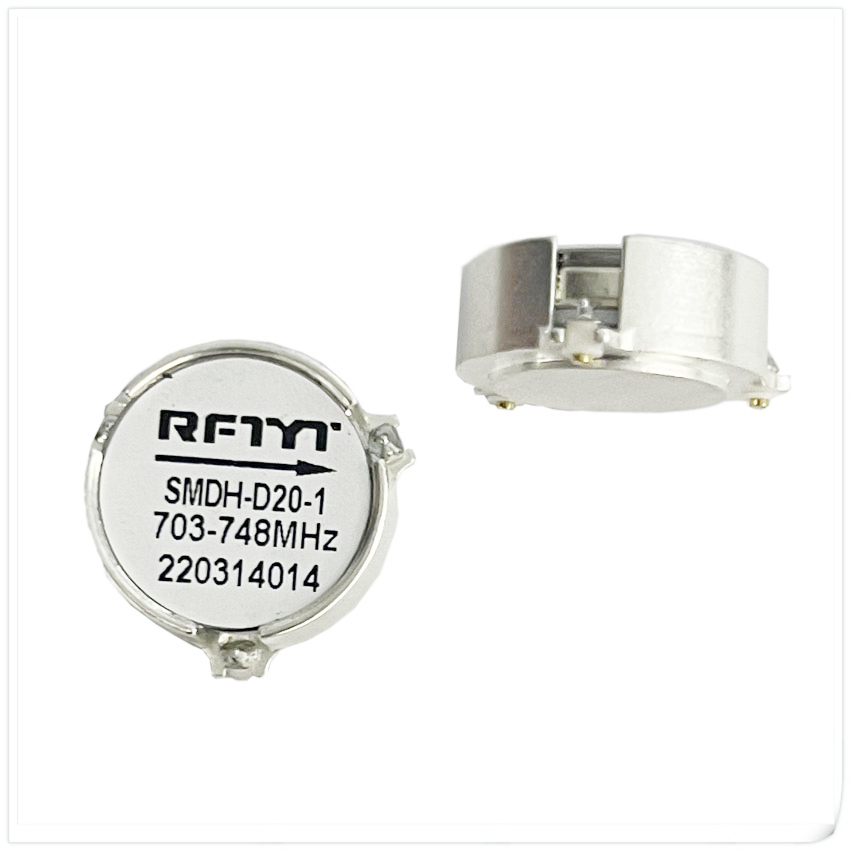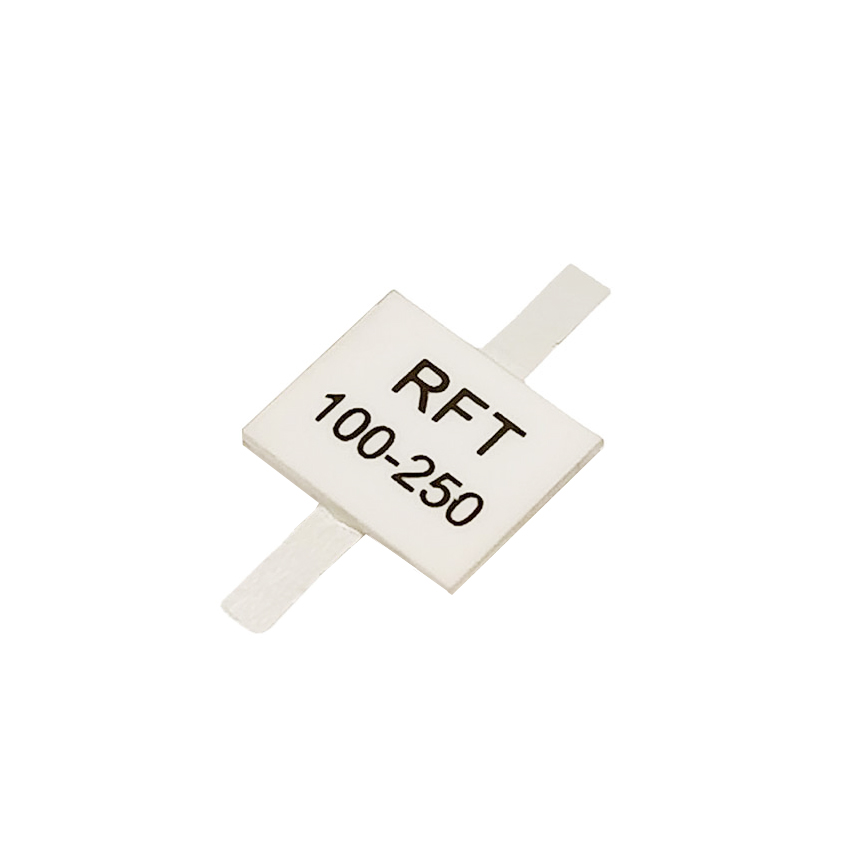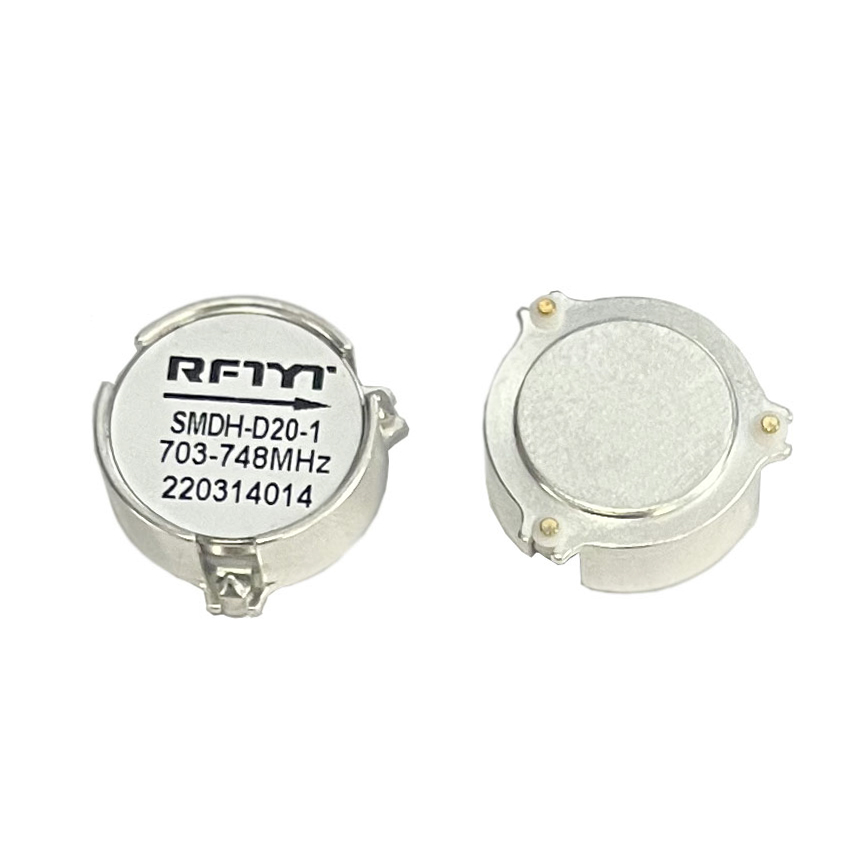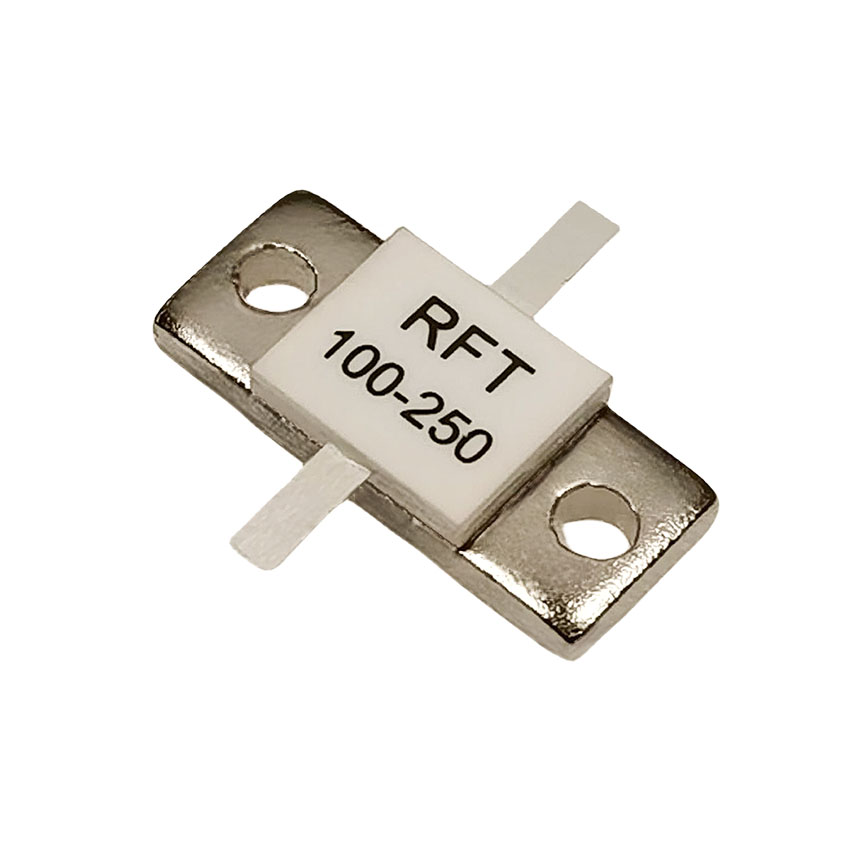
Products
SMD Circulator
Data Sheet
| RFTYT 400MHz-9.5GHz RF Surface Mount Circulator | ||||||||
| Model | Freq.Range | BandWidth Max. | IL. (dB) | Isolation (dB) | VSWR | Forward Power (W) | Dimension (mm) | |
| SMTH-D35 | 300-1000MHz | 10% | 0.60 | 18.0 | 1.30 | 300 | Φ35*10.5 | |
| SMTH-D25.4 | 400-1800MHz | 10% | 0.40 | 20.0 | 1.25 | 200 | Φ25.4×9.5 | |
| SMTH-D20 | 750-2500MHz | 20% | 0.40 | 20.0 | 1.25 | 100 | Φ20×8 | |
| SMTH-D12.5 | 800-5900MHz | 15% | 0.40 | 20.0 | 1.25 | 50 | Φ12.5×7 | |
| SMTH-D15 | 1000-5000MHz | 5% | 0.40 | 20.0 | 1.25 | 60 | Φ15.2×7 | |
| SMTH-D18 | 1400-3800MHz | 20% | 0.30 | 23.0 | 1.20 | 60 | Φ18×8 | |
| SMTH-D12.3A | 1400-6000MHz | 20% | 0.40 | 20.0 | 1.25 | 30 | Φ12.3×7 | |
| SMTH-D12.3B | 1400-6000MHz | 20% | 0.40 | 20.0 | 1.25 | 30 | Φ12.3×7 | |
| SMDH-D10 | 3000-6000MHz | 10% | 0.40 | 20.0 | 1.25 | 30 | Φ10×7 | |
Overview
Secondly, the SMD surface mount Circulator has good isolation performance. They can effectively isolate the transmitting and receiving signals, prevent interference, and maintain signal integrity. The superiority of this isolation performance can ensure the efficient operation of the system and reduce signal interference.
In addition, the SMD surface mount Circulator also has excellent temperature stability. They can operate over a wide temperature range, typically reaching temperatures ranging from -40 ° C to+85 ° C, or even wider. This temperature stability enables the SMD surface mount Circulator to operate reliably in various environments.
The packaging method of SMD surface mount Circulators also makes them easy to integrate and install. They can directly install circular devices on PCBs through mounting technology, without the need for traditional pin insertion or soldering methods. This surface mount packaging method not only improves production efficiency, but also enables higher density integration, thereby saving space and simplifying system design.
In addition, SMD surface mount Circulators have wide applications in high-frequency communication systems and microwave equipment. They can be used to isolate signals between RF amplifiers and antennas, improving system performance and stability. In addition, SMD surface mount Circulators can also be used in wireless devices, such as wireless communication, radar systems, and satellite communication, to meet the needs of high-frequency signal isolation and decoupling.
In summary, the SMD surface mount Circulator is a compact, lightweight, and easy to install ring-shaped device with extensive frequency band coverage, good isolation performance, and temperature stability. They have important applications in fields such as high-frequency communication systems, microwave equipment, and radio equipment. With the continuous development of technology, SMD surface mount Circulators will play an important role in more fields and contribute to the development of modern communication technology.
RF Surface Mount Technology (RF SMT) circulator is a special type of RF device used to control and manage signal flow in RF systems. Its working principle is based on the Faraday rotation and magnetic resonance phenomena in electromagnetics. The main feature of this device is to allow signals in a specific direction to pass through while blocking signals in the opposite direction.
The RF SMT circulator consists of three ports, each of which can serve as an input or output. When a signal enters a port, it is directed to the next port and then exits from the third port. The direction of flow of this signal is usually clockwise or counterclockwise. If the signal attempts to propagate in an unexpected direction, the circulator will block or absorb the signal to avoid interference with other parts of the system from the reverse signal.
The main advantages of RF SMT circulators are their miniaturization and high integration. Due to the use of surface mount technology, this circulator can be directly installed on the circuit board without the need for additional connecting wires or connectors. This not only reduces the volume and weight of the equipment, but also simplifies the installation and maintenance process. In addition, due to its highly integrated design, RF SMT circulators typically have better performance and reliability.
In practical applications, RF SMT circulators play a crucial role in many RF systems. For example, in a radar system, it can prevent reverse echo signals from entering the transmitter, thereby protecting the transmitter from damage. In communication systems, it can be used to isolate the transmitting and receiving antennas to prevent the transmitted signal from directly entering the receiver. In addition, due to its miniaturization and high integration, the RF SMT circulator is also widely used in fields such as unmanned aerial vehicles and satellite communication.
However, designing and manufacturing RF SMT circulators also face some challenges. Firstly, as its working principle involves complex electromagnetic theory, designing and optimizing a circulator requires profound professional knowledge. Secondly, due to the use of surface mount technology, the manufacturing process of the circulator requires high-precision equipment and strict quality control. Finally, as each port of the circulator needs to accurately match the signal frequency being processed, testing and debugging the circulator also requires professional equipment and technology.









